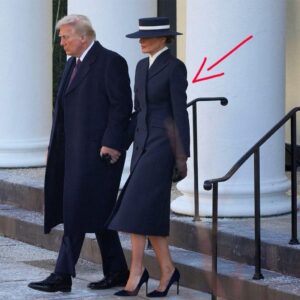In the shifting landscape of global trade and social media, a new battleground has emerged — and it’s playing out on TikTok. Dubbed a “bloodbath” by market analysts, this ongoing saga sees Chinese manufacturers directly targeting high-end American brands, exposing product markups and manufacturing secrets to millions of viewers in real-time. What started as an entertaining trend has become a wake-up call for Western luxury labels and consumers alike.
The Rise of Transparency via TikTok
Over the past year, TikTok has evolved far beyond a simple video-sharing platform. It’s now a powerful marketplace and a space for unfiltered conversations about business practices, pricing strategies, and product origins. In the middle of tariff disputes and escalating tensions between the U.S. and China, many Chinese manufacturers have found a unique, sometimes provocative, way to reach American audiences: by directly showcasing the same products sold under premium American brands, revealing their shockingly low factory prices.
These videos typically follow a simple but effective formula. A Chinese factory worker or manager displays a product — handbags, sneakers, skincare, electronics — alongside screenshots or physical examples of the same item being sold under a luxury brand name in the U.S. The factory price is then revealed, often a fraction (sometimes less than 10%) of the American retail price. The stark comparison is frequently punctuated with hashtags like #factoryprice, #brandexposed, or #fromthefactory.
Why Now? The Impact of Tariffs and Trade Tensions
This surge in price-revealing content comes in the wake of mounting tariffs between the U.S. and China, with the Biden administration maintaining much of the tariff framework established during the Trump era. These policies have increased the cost of imported Chinese goods, especially for American companies reliant on Chinese manufacturing.
High-end brands, in particular, have long outsourced production to China while keeping pricing strategies opaque. Tariffs not only increased their costs but also drew public attention to the global nature of their supply chains. As American consumers face inflationary pressures, many are beginning to question whether brand markups are justified — and TikTok is feeding that skepticism.
Chinese manufacturers, meanwhile, see an opportunity. By using TikTok, they bypass traditional wholesale and export routes, reaching customers directly while exposing the pricing practices of their American clients. It’s a form of economic retaliation wrapped in viral content.
American Brands Caught in the Crossfire
Luxury brands and boutique labels alike have found themselves in the uncomfortable position of being publicly unmasked. Bags sold for $400 in U.S. malls have been revealed as $25 factory items, and $200 skincare products are shown to be repackaged $5 creams.
Some brands have responded by defending their pricing as a reflection of design, marketing, and retail overhead. “You’re not just buying the product — you’re buying the brand experience,” claimed one American fashion house in a recent statement. Others, however, have remained silent, wary of amplifying the controversy.
In the eyes of many TikTok users, though, these explanations fall flat. As one viral comment on a recent video put it: “If it’s $30 to make and $500 to buy, it better come with a ticket to Paris and a dinner with the CEO.”
Consumer Shift: Value vs. Prestige
This price exposure phenomenon reflects a broader consumer trend: the growing demand for transparency and authenticity. Younger shoppers, especially Gen Z and Millennials, are increasingly driven by value and ethics rather than just labels. They are more likely to question why a handbag made in the same factory is priced so differently based solely on a logo.
As TikTok’s “factory direct” videos gain traction, alternative shopping models like direct-to-consumer (DTC) brands and dropshipping services have gained popularity. These platforms promise lower prices by cutting out intermediaries, often sourcing from the same factories that luxury brands use.
The implication for established brands is clear: consumers are less willing to pay steep premiums when the production reality is only a click away.
The Geopolitical Undercurrent
Beyond economics and consumer habits, this bloodbath has geopolitical undertones. It reflects growing digital nationalism and the shifting dynamics of influence between China and the U.S. TikTok itself, a Chinese-owned platform, has been under intense scrutiny in the U.S., with lawmakers debating bans or divestment due to data security concerns.
Yet ironically, it is this very platform that’s giving Chinese manufacturers unprecedented access to American audiences, allowing them to undercut U.S. brands not just economically, but reputationally.
Some experts believe this is no coincidence. “It’s a kind of soft power play,” says international trade analyst Li Zhihao. “While governments negotiate tariffs and restrictions, Chinese businesses are turning to digital tools to win over consumers directly.”
What’s Next?
As the TikTok factory exposé trend continues, American brands will likely be forced to adjust. Some may rethink their pricing models or move manufacturing to other regions like Vietnam or Mexico to escape scrutiny and tariffs. Others might double down on brand prestige, investing even more heavily in marketing, exclusivity, and experiential retail to justify their prices.
Meanwhile, platforms like TikTok will remain at the center of this disruptive dynamic. As long as consumers crave transparency and value, videos comparing factory prices to retail tags will continue to go viral.
In the end, what started as a series of entertaining clips could reshape global retail relationships — and redefine what consumers are willing to pay for a brand name.







